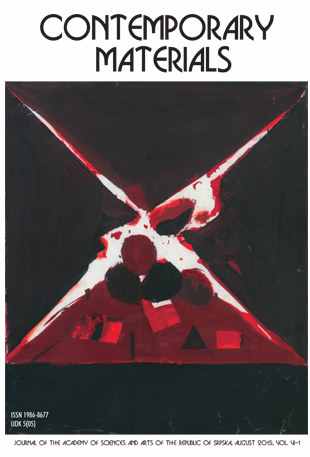PROPERTIES OF THE HAND MIXED PMMA BASED CEMENT FOR BIOMEDICAL APPLICATIONS
DOI:
https://doi.org/10.7251/COMEN2002085ZAbstract
This paper presents insights into the recent trends in development of PMMA bone cements considering their improvements for applications in clinical practice. Experimental investigation of hand mixed PMMA bone cement was realized, aiming to determine mechanical behavior of the material during nanoindentation. Standard multi-cycle indentation tests were applied, with maximum load of 15 N and immediate load relaxation down to 5 N, with sharp Vickers indenter. Indentation curves were obtained and analyzed as the function of the normal load vs penetration depth, for three different numbers of cycles (100, 200 and 300 cycles) and different indentation positions on the sample surface. Resulting indents were analyses from the aspect of the final material structure and its subsequent mechanical behavior. Agglomeration of PMMA beads was observed in the final hardened cement in some surface zones, thus indicating non-homogenous material structure. Changes in the number of cycles did not show significant influence on the mechanical response of the sample. However, sites with agglomerated PMMA beads showed significantly different indentation curves, thus indicating that hand-mixing of PMMA bone cement can produce non-homogenous final material structure.
Keywords: PMMA bone cement; biomedical applications; nanoindentation.
